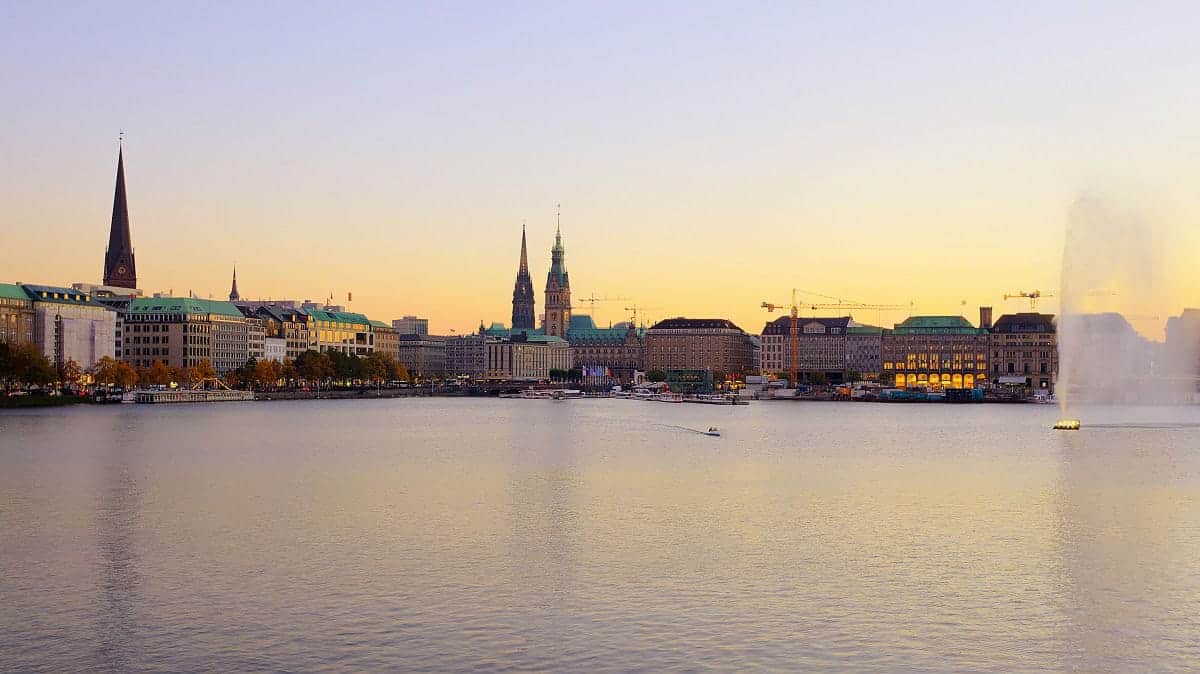
The most scenic way to enter Hamburg is from the estuary of the Elbe River. As the boat proceeds downstream one sees fields and small towns progressively leaving space to a more urban landscape: on your left hand side, the district of Altona overlooks the city airport that lays right on the water. As the Elbe imperceptibly narrows one’s sight is captured by the expanse of cranes, containers and port structures. Crafts cut through the waves, the river traffic intensifies; impertinent seagulls shriek, ferries whistle, the breeze hits: finally before your eyes, Hamburg’s city centre rises from the waters.
Hamburg is the second largest city in Germany, as well as the second busiest and biggest port in Europe after Rotterdam. Yet it’s everything but some dreary industrial and shipping centre: the city is a magnet for tourists, and a hotbed for cultural surprises and entertainment occasions – some of its highlights will be disclosed in the following itinerary through the eyes of our locals.
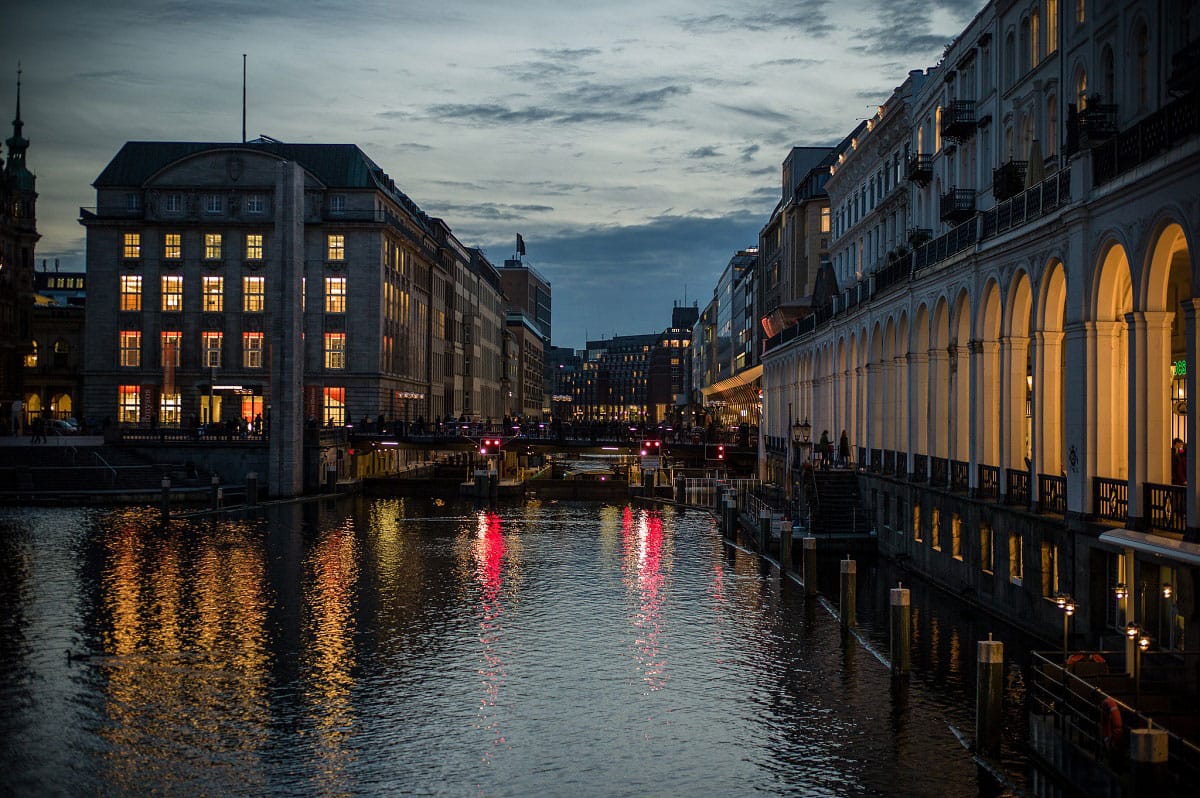
Despite the widespread destruction caused by the last world conflict, Hamburg has managed to preserve, re-adapt and restore a consistent portion of its historical heritage. Likewise, urban projects such as the HafenCity have brought together international names of architecture and design for the redevelopment of entire areas of the city. Between daring architectural structures and the high spires of its churches there are large green areas, making Hamburg one of the greenest cities in Europe. Finance and the media industry have heavily fueled its last decades’ economic success, but the city also holds tight to its vocation of international port.
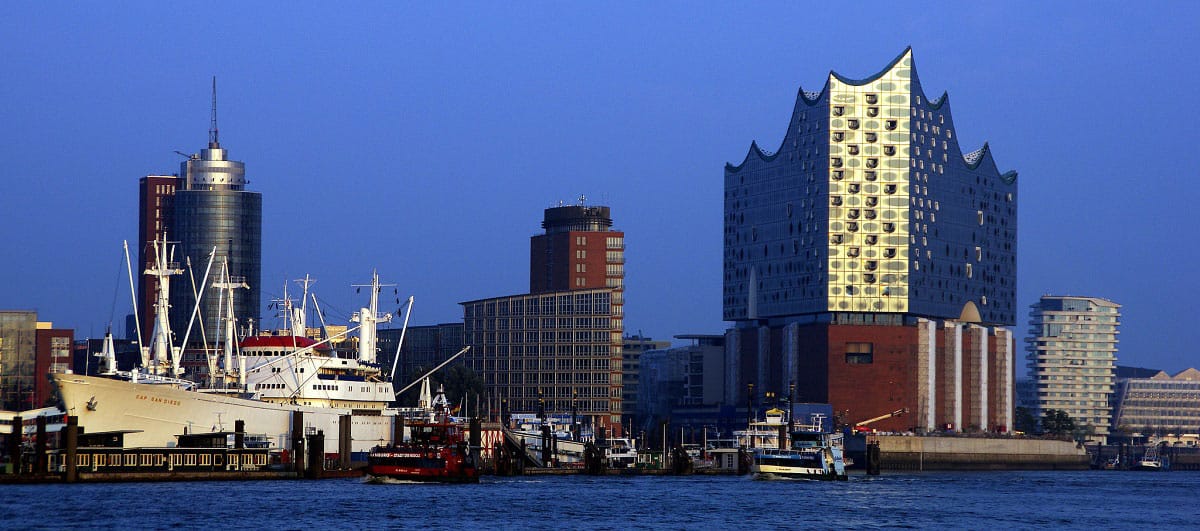
Overall, the feeling one gets from Hamburg is of an urban centre that has managed to strengthen its original assets while embracing new economic opportunities and high liveability for its citizens, resulting in a thriving urban mix. Each district and neighbourhood boasts a unique character and several attractions – just take a look at our Hamburg map: it is dotted from top to bottom by our Spotters’ suggestions. You should therefore not miss the occasion to travel the city by bike (Hamburg is definitely a bike-friendly place) to get a taste of all its nuances. On this matter, one of the suggestions of our Spotter Matthias proves to be of great use: offering a 2 day/€ 25 deal, Zweiradperle gives you the chance to rent your own personal (electric!) bike to tour around Hamburg. In addition to that, the bike-rental service also provides guided bike tours through the city and its outskirts, but.. let’s not digress further, Spotted by Locals has its own itinerary too!
Get on the saddle and start riding: here we go, ready to discover Hamburg. As a local (cyclist), of course.
Day 1: 09:00 – 13:00
Began your day in the chic Eppendorfer Weg, one of the main arteries of the upmarket Eppendorf neighbourhood in the north of Hamburg; here fashion boutiques, inviting delis and trendy bars follow one another, gracing the windows of the many Art Nouveau buildings of the northern segment of the street. If you’re after a spot for a fine morning coffee Ute’s favourite is Burg’s Kaffeerösterei, a pretty coffee roastery where you can browse through a multitude of coffee blends, unique gift ideas and mouthwatering chocolates. Close-by, each Tuesday and Friday Isestrasse becomes the seat of the Isemarkt; with more than 200 vendor stalls, the culinary delicacies and stylish goods sold at the Isemarkt will quickly awake all your 5 senses – and along with them your cravings for food and shopping.
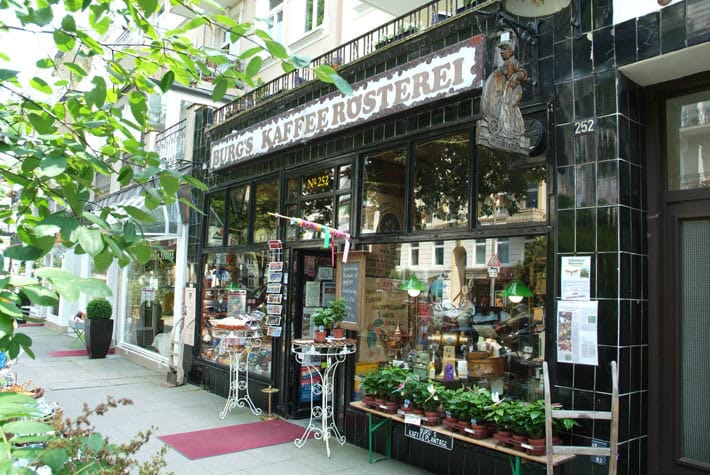
Hop on your bike and head south, riding along the Alster. Centuries ago the second river flowing through Hamburg was dammed to form two artificial lakes, the small Binnenalster (Inner Alster) and the much larger Aussenalster (Outer Alster). The 7.4 km-long walk that surrounds the two basins goes by the name of Alsterrunde and offers picture-like views over the city centre and the leafy recreational areas scattered around the bodies of water. Cross the bridge dividing the Inner from the Outer Alster, pass Hamburg Central Station and reach the Deichtorhallen. The two iconic steel-and-glass buildings, erected between 1911 and 1914 as wholesale markets for vegetables and flowers, now host one of the most prominent European centres for contemporary art and photography. Refurbished in the late 1980s, the airy interiors enhance the display of the fantastic exhibitions that the Deichtorhallen host throughout the year.
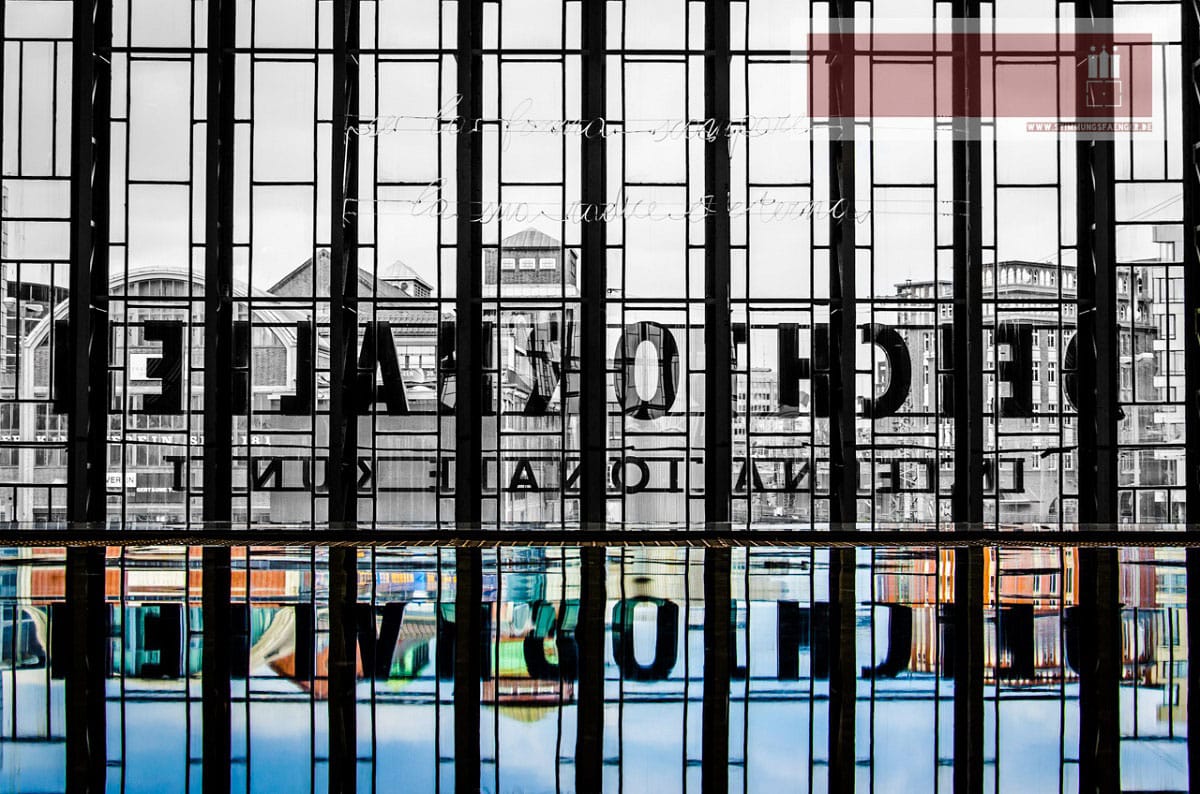
Day 1: 13:00 – 19:00
The Deichtorhallen is at the eastern edge of Hamburg’s city centre. Made up by the Altstadt (German for Old Town), where the majority of Hamburg’s historic monuments are to be found, and the greener Neustadt (German for New Town), the city core has been largely colonised by retail and food chains. As hard as it might turn out to be to find a genuine place for a tasty lunch, don’t lose your hope and spot the unassuming O-ren Ishii among the office buildings. The tiny restaurant is often cramped with locals and workers – which is already a good sign. Indeed, O-ren Ishii serves some of the most flavoursome Vietnamese dishes in the whole city. Order one of their yummy glass-noodle salads, and if the weather allows for it sit in the outdoor area or in the park nearby.
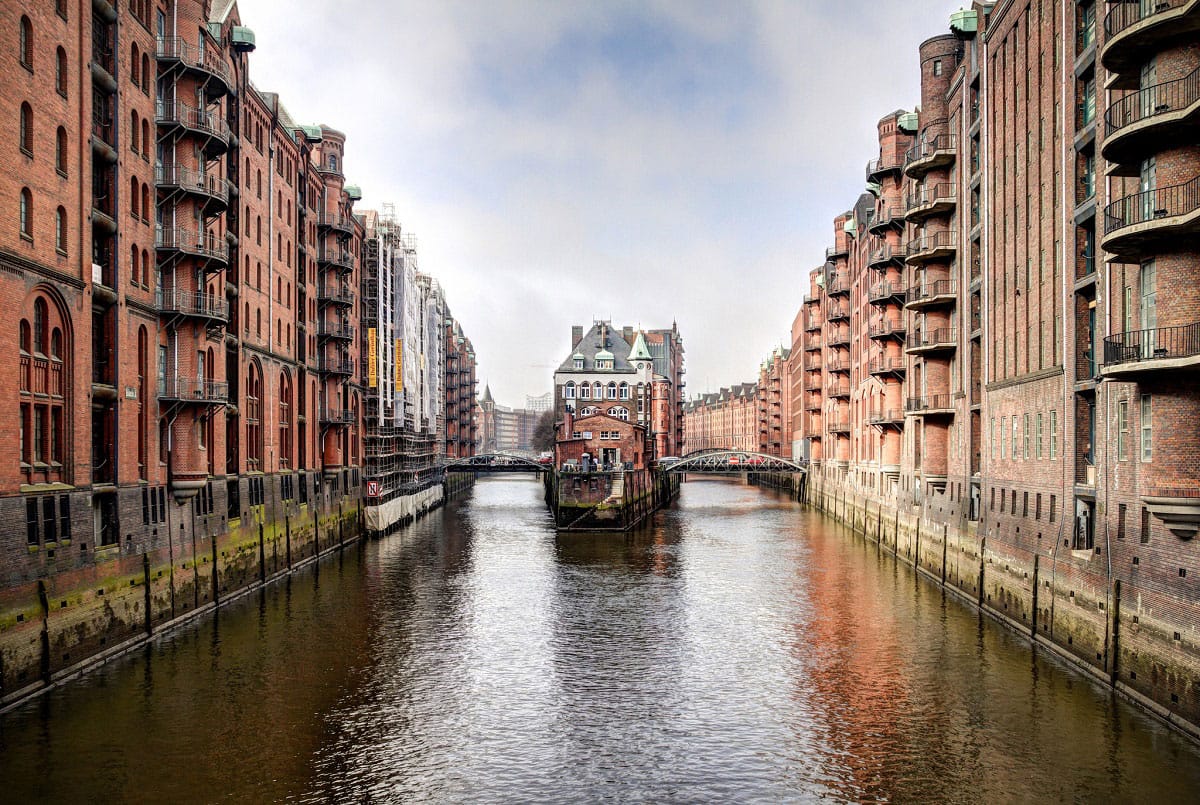
South of the Altstadt is the previously mentioned quarter of HafenCity. Considered the largest inner city redevelopment project in the whole continent, Hafencity is a work in progress to be completed between 2020 and 2030. The Elbe Philarmonic Hall, an outstanding concert hall built on top of an old warehouse, is just one of the various attractions of the area.
The oldest part of HafenCity goes by the name of Speicherstadt and upon its regeneration has turned into a beloved attraction for tourists – and a desirable address for the wealthy citizens of Hamburg to live. Literally meaning ‘City of Warehouses’, Speicherstadt is the largest warehouse district in Europe. The structures that survived WWII, built on the water on timber-pile foundations, are exquisite examples of Industrial Neo-Gothic architecture. Their facades are adorned with terracotta decorations, towers and alcoves. In 2015, the whole area was listed in the UNESCO list of world heritage sites.
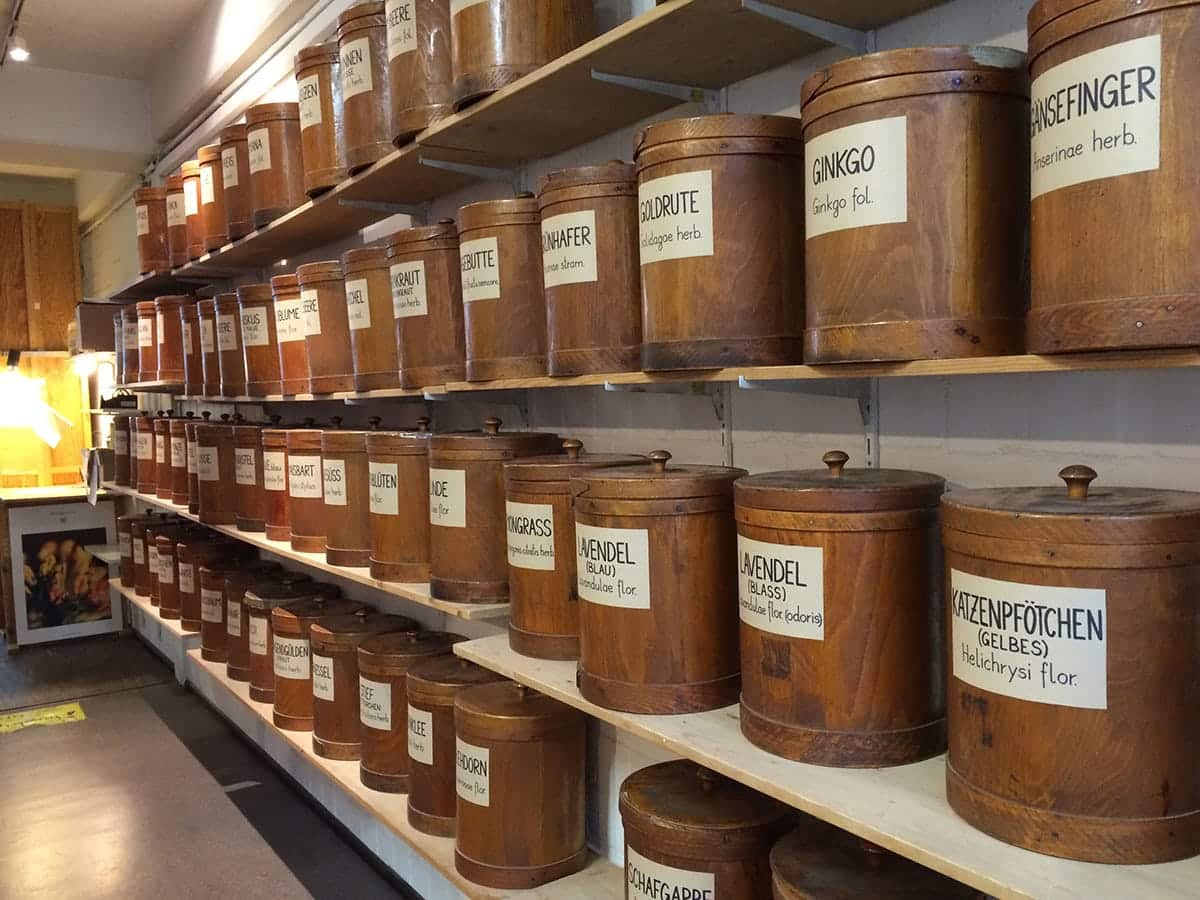
North-east of the Altstadt, ride through the always happening area of St.Georg. Known for being the centre of Hamburg’s gay counterculture, the district has lost most of its sketchiness and has become one of the hippest hangouts of the city. Along Lange Reihe, find a variety of pop-up bars, ethnic take-aways and supermarkets and boho-chic shops. Among them, Kräuterhaus brushes up the antique knowledge of crafting mixtures of herbs and essences. On sale are teas and herbs as well as natural cosmetics and hair and body-care products. If your wardrobe needs an upgrade, visit Cream and browse through their all the rage hipster collections of shoes, clothes and accessories.
Before heading for dinner, the historical M&V Bar is a colourful spot that perfectly matches the tolerant, merry and open atmosphere of St. Georg. The bar is open until 02:00; it’s a wonderful spot for starting or finishing your dinner, but just keep in mind that happy hour beers are for only ONE euro – would you miss the bargain? I wouldn’t!
Day 1: 19:00 – 23:00
Evening is a great moment for admiring the beauty of the city centre: the worker leave and the streets become calmer. However, that doesn’t mean the area is devoid of fine dinner joints. Café Paris is upscale and on the pricey side, Gröninger Braukeller is more ‘rustic’ and affordable. Whatever you prefer between the two, you’ll go classic and make no mistake. Café Paris is an Art Nouveau jewel soaked in ‘Frenchness’: French culinary highlights (try their tartare), French wines, waiters with French accents and the 19th century, tiled grand hall and its elegant decor are nothing less than spectacular. Ça va sans dire, reservation is recommended.
On the other side, Gröninger Braukeller’s interior (as the German name suggests, the restaurant is hosted in an old cellar) is lovely furnished in the typical German tavern-style: the high vaults lit by candles, wooden benches and barrels make this place a lovely (and lively) spot for a genuine and filling dinner. The menu features dishes from both the Bavarian (sausages, pork chops…) and Hanseatic (seafood platters) food tradition; fabulous additional plus: Gröninger Braukeller has its own beer too!
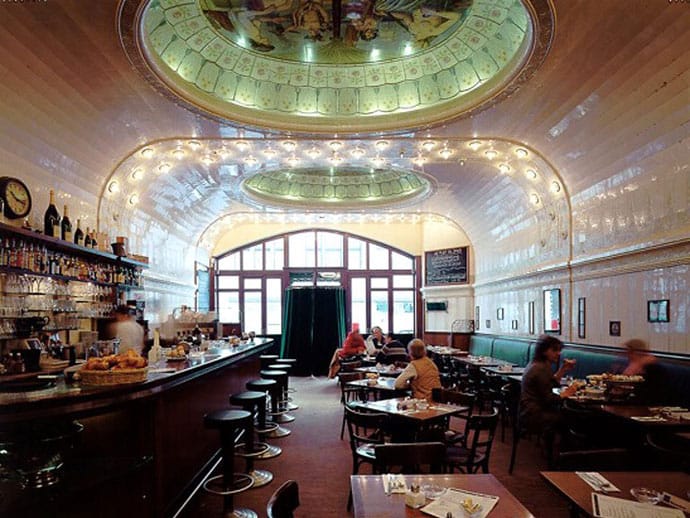
Bike away from the centre: aside from helping you digest your rich meal, you’ll get to see Hamburg’s nightlife epicentres in the blink of an eye. One of them is the infamous district of St. Pauli, a balanced mix of deprived tenements, seedy-looking venues (St. Pauli is the city’s red light district), refurbished lofts and hip bars. South of the Reeperbahn, the street that cuts St. Pauli in two sections, sip a drink at The Chug Club. Opened in 2015, the Mexican cantina-like bar has quickly made a name for itself thanks to its uber-awesome drinks. Tequila and Mezcal reach their apotheosis combined with other ingredients – the glasses are tiny, but the quality of the craft hugely compensates for their dimension.
In the upcoming Karolinenviertel, in North St. Pauli, Kleines Phi is another recent addition to Hamburg’s bar scene. Cool atmosphere, minimal-chic decor, cool kids hanging around and craft beers – simple formula for guaranteed success.
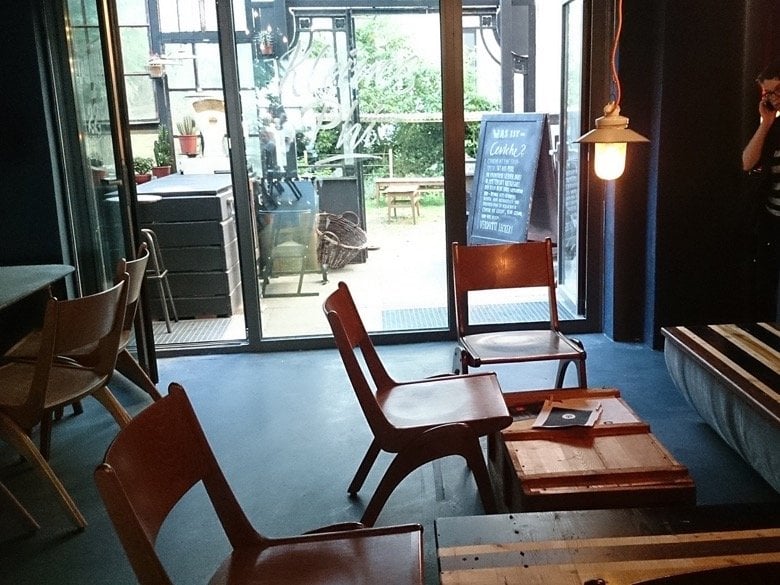
Day 1: 23:00 – …
Oh, now you will definitely be happy to have a 2-wheeled friend with you (unless you’ve been lifting your drinking arm way too many times)! Both Golem and Frappant are located in the borough of Altona, not really a stone’s throw from where you just had food and drinks.
Golem is a laboratory of ingenious bartenders experimenting innovative combos of flavours and ingredients in the quest for crafting the perfect cocktail… just kidding, all their cocktails are to die for. Challenge them to create an interesting experiment: they are asking for it. On the weekends, Golem turns into a dancing place with just the right amount of quirkiness; hidden between the bookshelves, a secret door gets you access to the Krypta, where there’s additional space for dancing.
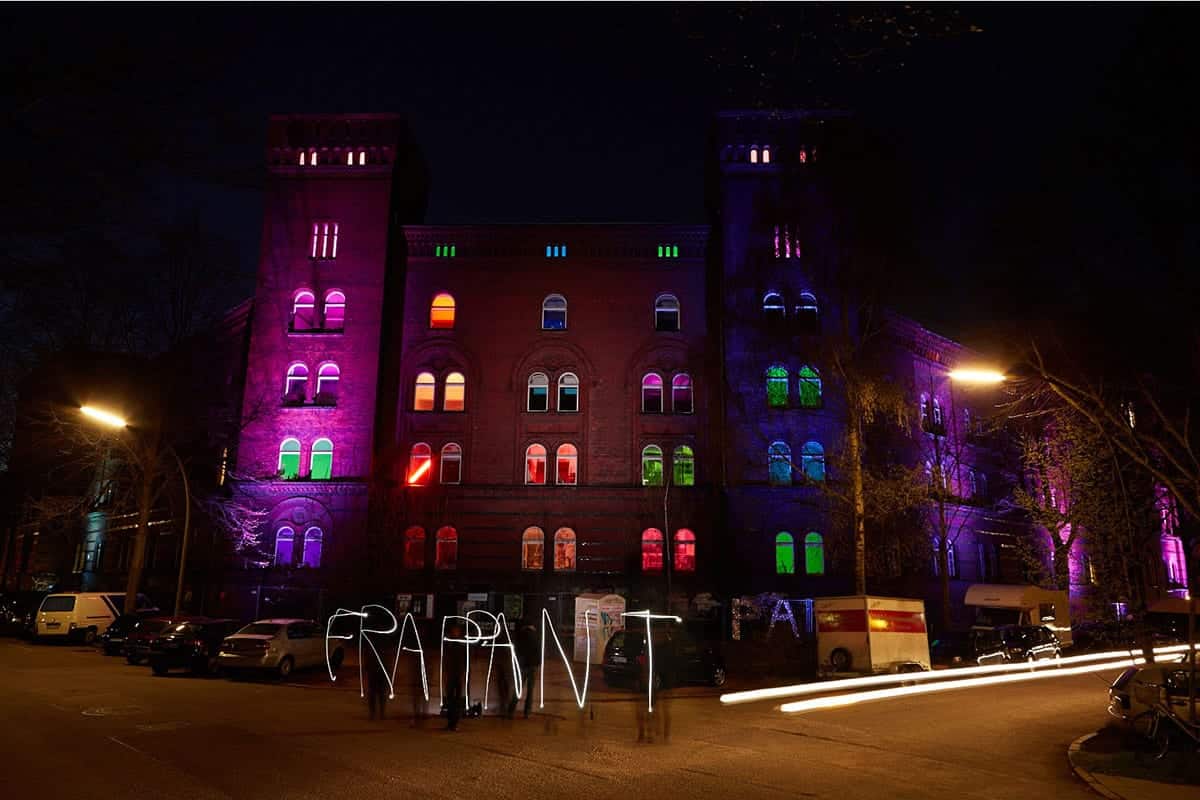
Further north in Altona, a network of creatives has given birth to Frappant. Hosted in a 19th century police station, Frappant is well known for its art exhibitions, creative workshops and smashing weekend parties – just check their page to discover what’s on.
Day 2: 09:00 – 13:00
Having breakfast at the hospital is not exactly the sweetest way to wake up… maybe? Well, this doesn’t apply to Hadley’s. Hosted in the former ER of a 19th century hospital, the bar/cafe offers tasty treats in the morning and excellent wines throughout the day; Hadley’s is also renowned for being the birthplace of the Elbjazz Festival, a not-to-miss music event for jazz lovers. A bunch of streets to the east, in the former Jewish quarter of Grindel find Café Leonar; our Spotter Elisabeth is a fan of its old-school interior, delightful lunch meze (Middle-Eastern variety of small dishes and appetizers) and small yet satisfying breakfasts with an international touch.
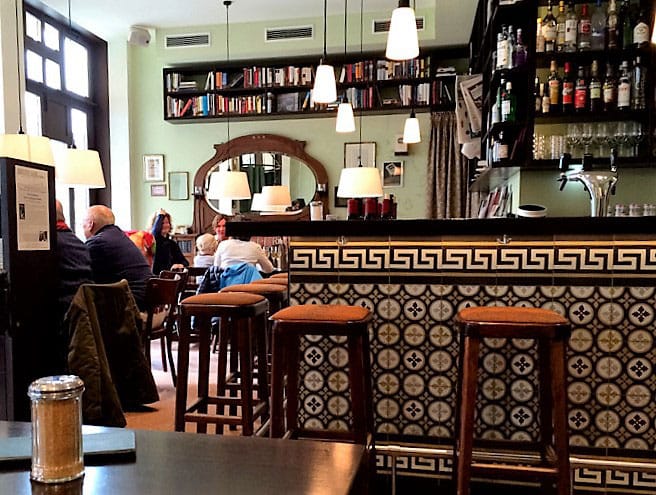
Bike south and cross the Planten un Blomen, Hamburg’s central green lung, and take some time to discover the Neustadt. In front of the Farmer’s Market, step into Perle Store: the neighbourhood’s ambassador of coolness provides snappy fashionistas with high-end clothes, rare records and quaint accessories for the home. A quick ride from there, the ruins of St. Nikolai Church in the Altstadt stand as a memento of the horror of the wars. Empty window frames, crumbling statues and the highest tower in town are what remains of what was once a majestic Neo-Gothic church, burned during the air raids on Hamburg. In the crypt, also used as a concert hall, is a documentation centre illustrating the devastation suffered by the city during WWII; take the lift to the top of the tower: the panorama over the centre and the harbour is simply stunning.
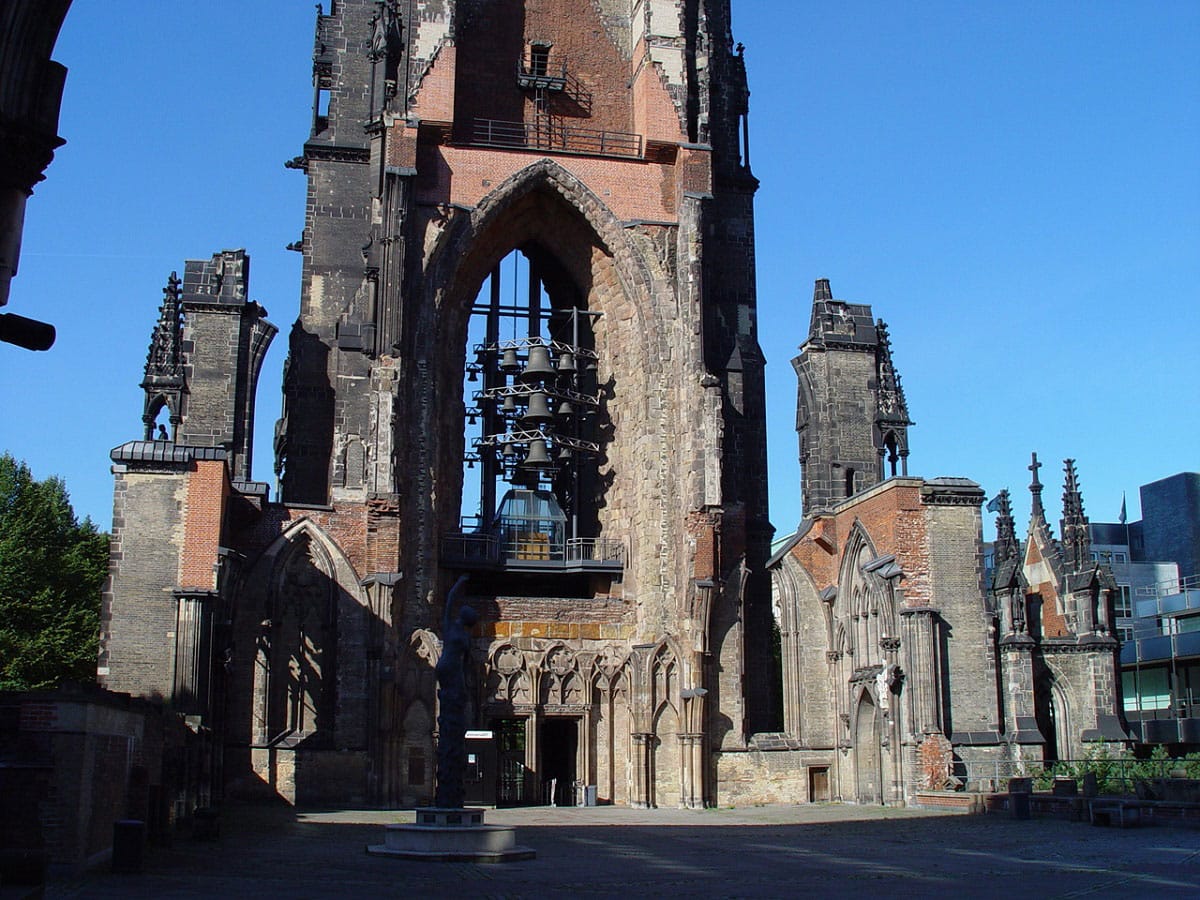
On the waterfront of St. Pauli, board on one of the Ferry n.62 of the Hamburg public transport (you can take your bike with you) and kill two birds with one stone: not only is the ferry a privileged and alternative way to see the city from the water, but it will also take you to the next step of your itinerary.
Day 2: 13:00 – 19:00
Get off at Altona/Fischmarkt. At this time Hamburg’s fish market is closed already (opening time Apr – Sept: 05:00 – 09:30), but it is still a good point of departure to visit the surroundings. Close to Altona train station, Mercado is a 4-storey mall very popular among the locals; far be it for me to suggest a visit to a mall, but… it’s time for lunch, and the ground floor market stands showcase a remarkable selection of international dishes that are nothing less than tempting. Otherwise, stay on the waterfront and enjoy the vista with a fish sandwich from Fisch & So, a small bistro which looks like a former fish shop.
Since you’re already in the area, be sure not to miss the Dockland, the ship-shaped 25 metre-tall office building by German-Iranian architect Hadi Teherani. If you’re up for a quick work-out session, climb the 140 external steps that lead to the top of the building: from the panoramic platform, another breathtaking view of the Elbe river.
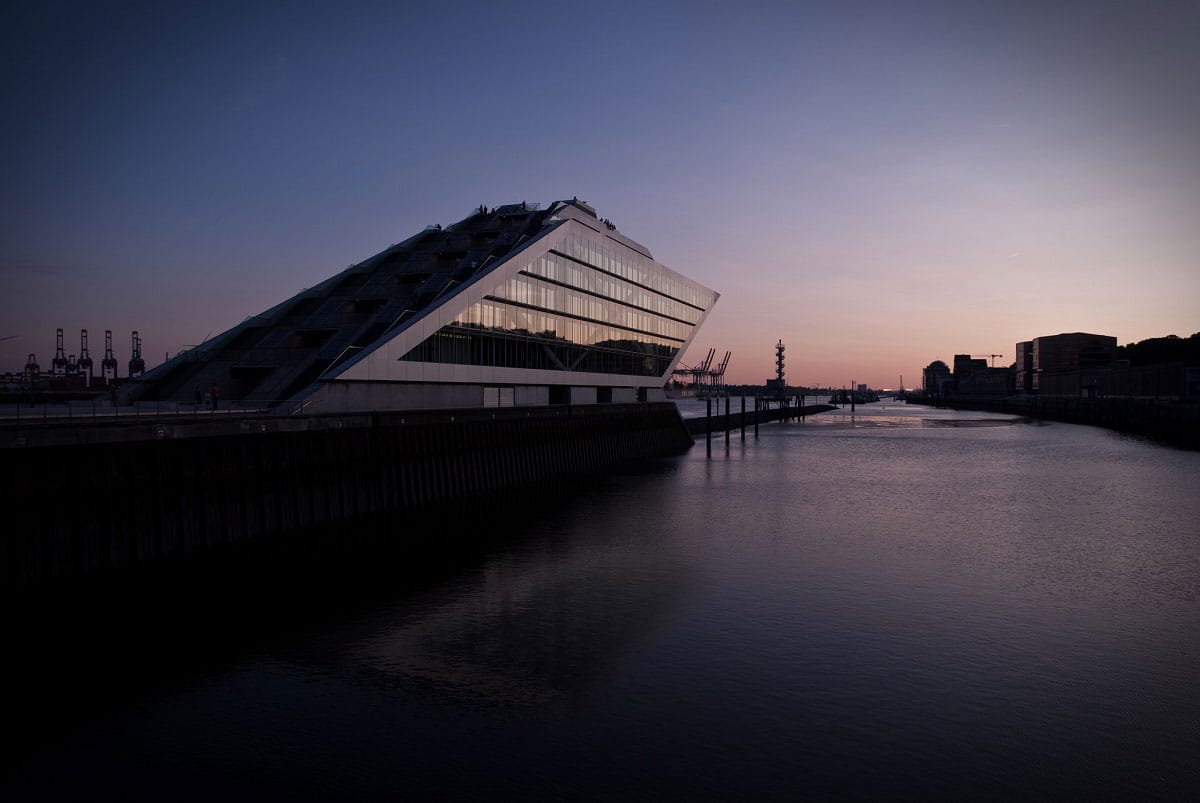
From there take a ride through Altona; as you venture into the streets you will notice graffiti and street art proliferating on the walls, especially in its northernmost neighbourhood, Sternschanze. Familiarly known as ‘Schanze’, the area is the playground of Hamburg’s hipsters, and despite recent waves of gentrification it has maintained a fairly gritty appeal. If you’re seeking some street art-related suggestions, our Spotter Matthias has drawn a partial Street Art Tour partially covering some of Schanze’s open-air works of art.
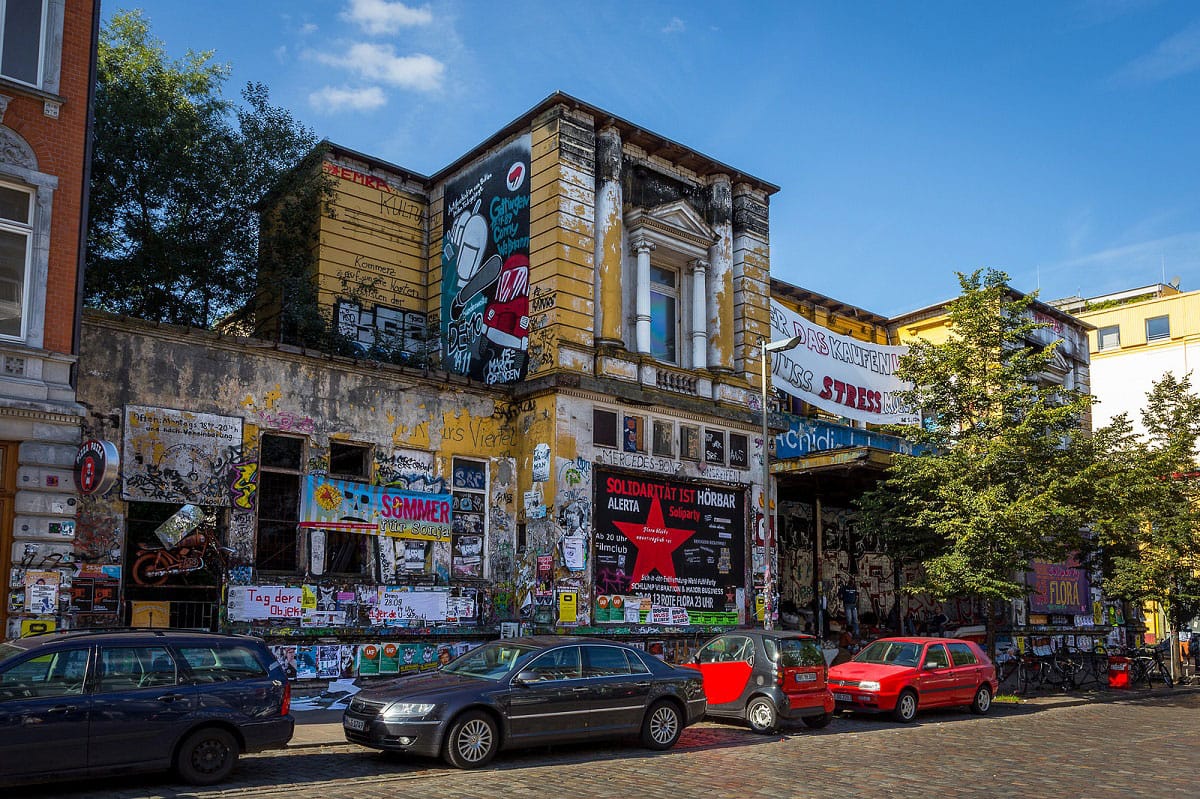
Covered in graffiti, posters and writings that change every few weeks is also the facade of Rote Flora. Previously a theatre, since 1989 Rote Flora has become an alternative, independent cultural and political centre hosting parties, talks, art performances and flea markets. To the north, Weidenallee is the posh and grown-up version of the hip Schanze. Located on the street is WEIDE, the biggest sister of Perle in Neustadt. Designer lamps, fancy wallpapers and pieces of furniture, exotic plants and scented candles… just remember to keep an eye on your credit card balance and the available space in your suitcase before surrendering to a shopping frenzy!
Day 2: 19:00 – 23:00
Schanze also means top-notch cuisine. Located in the heart of the neighbourhood, Nil‘s menu is a mouthwatering culinary journey, better enjoyed if accompanied by a few glasses of their German and French wine. Structured on three levels (and a patio) the restaurant won’t fail to meet the taste of even the most demanding foodies. A few minutes from there, Lokal 1 in Altstadt Altona focuses on bio-sustainable and high quality ingredients. It’s aesthetically pleasing with a cosy interior, outstanding list of German wines and excellent service: all in all, a superb dinner experience. Once again, don’t forget to book your table: locals are well aware of both spots.
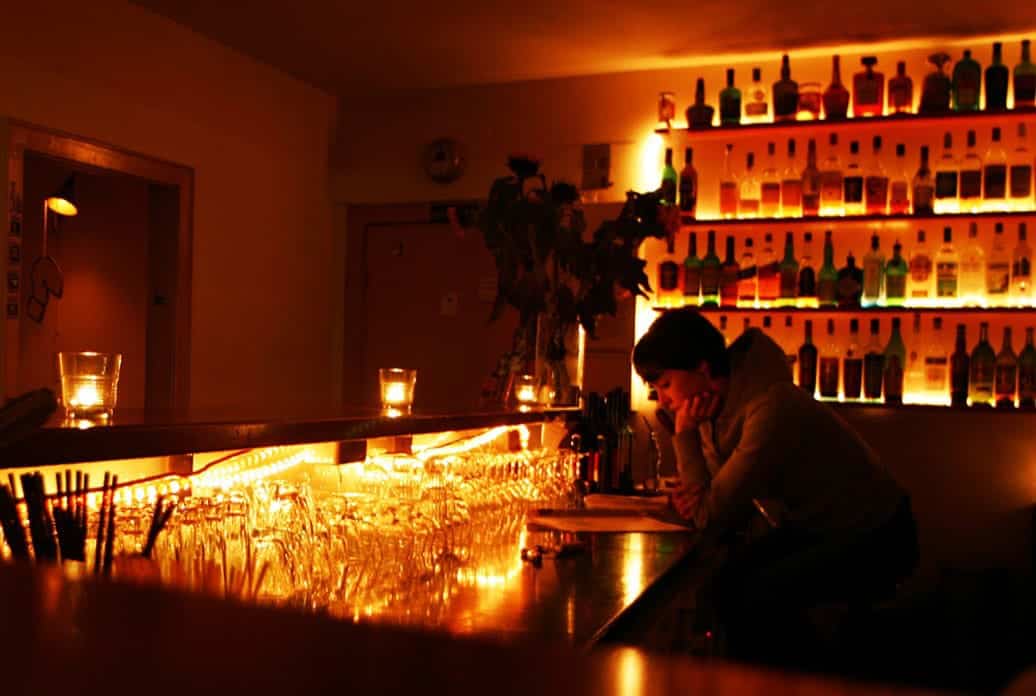
Next door to Local 1 are both Toast Bar and The Walrus Bar. The first is one of our Spotter Kyra’s favourite bars; friendly prices and local beers mainly cater to a 20-30 something lively clientele. On the other side the latter is a beloved spot by youngsters seeking to sip high-end crafty cocktails in a modern, sleek setting.
Day 2: 23:00 – …
Your last night in Hamburg ends without riding your bike to the opposite side of the city: Le Fonque and Hamburger Botschaft are close by. Couches and dark red lights welcome the visitor at Le Fonque, giving you the impression you have just stepped into a madam’s boudoir. The music ranges from funky to soul to house, the beer is cheap, the atmosphere electric, the space crowded and smokey… and FUN.
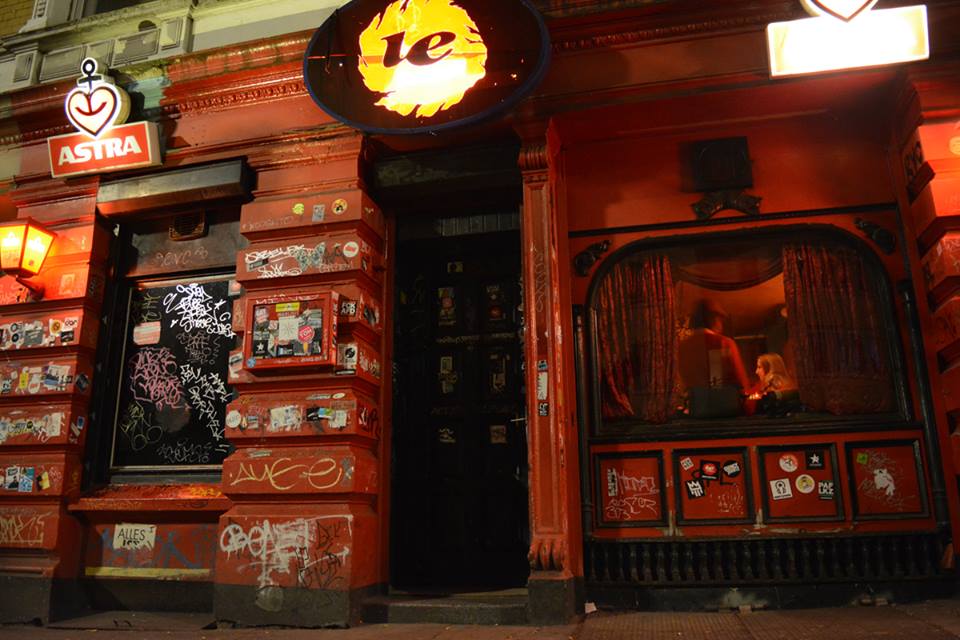
As an alternative, the guys who run Hamburger Botschaft have excellent music taste. You never know what and when something is going on, but if you happen to be in town when one of the DJs they know is hosting the evening, well.. don’t think about it twice: you are likely to attend the greatest party of the night.